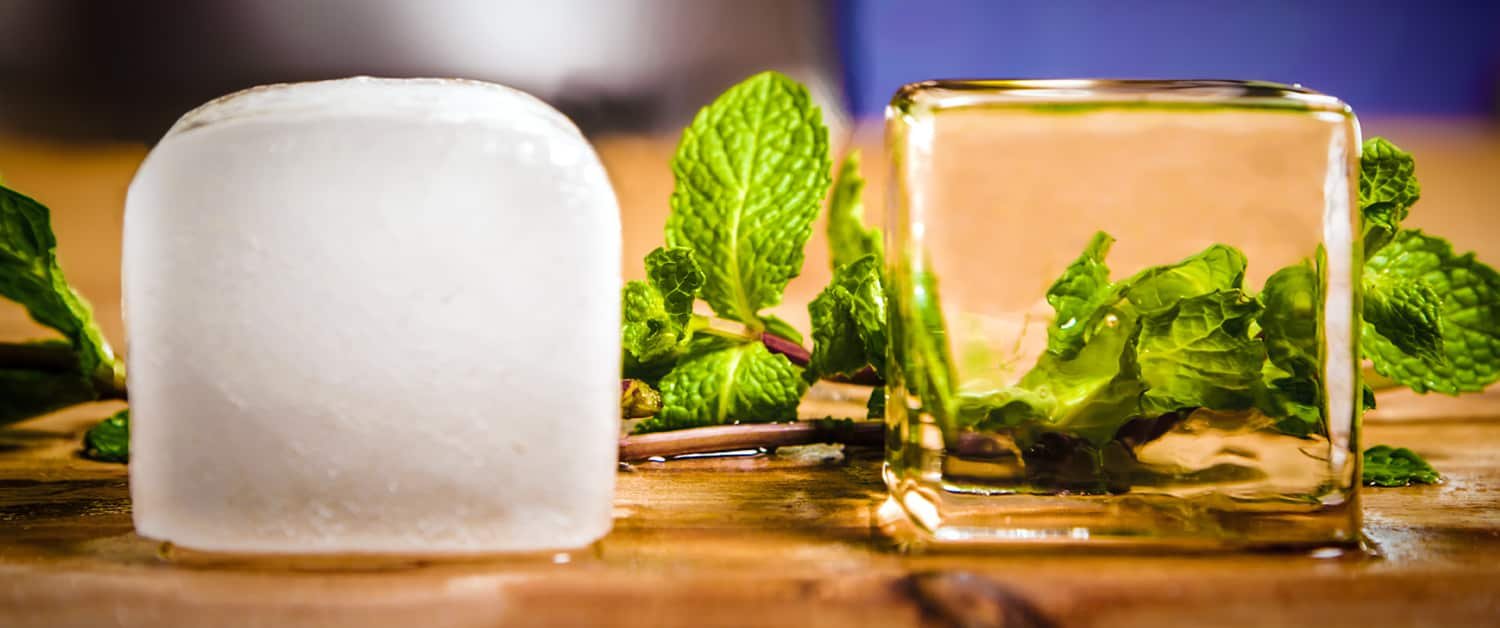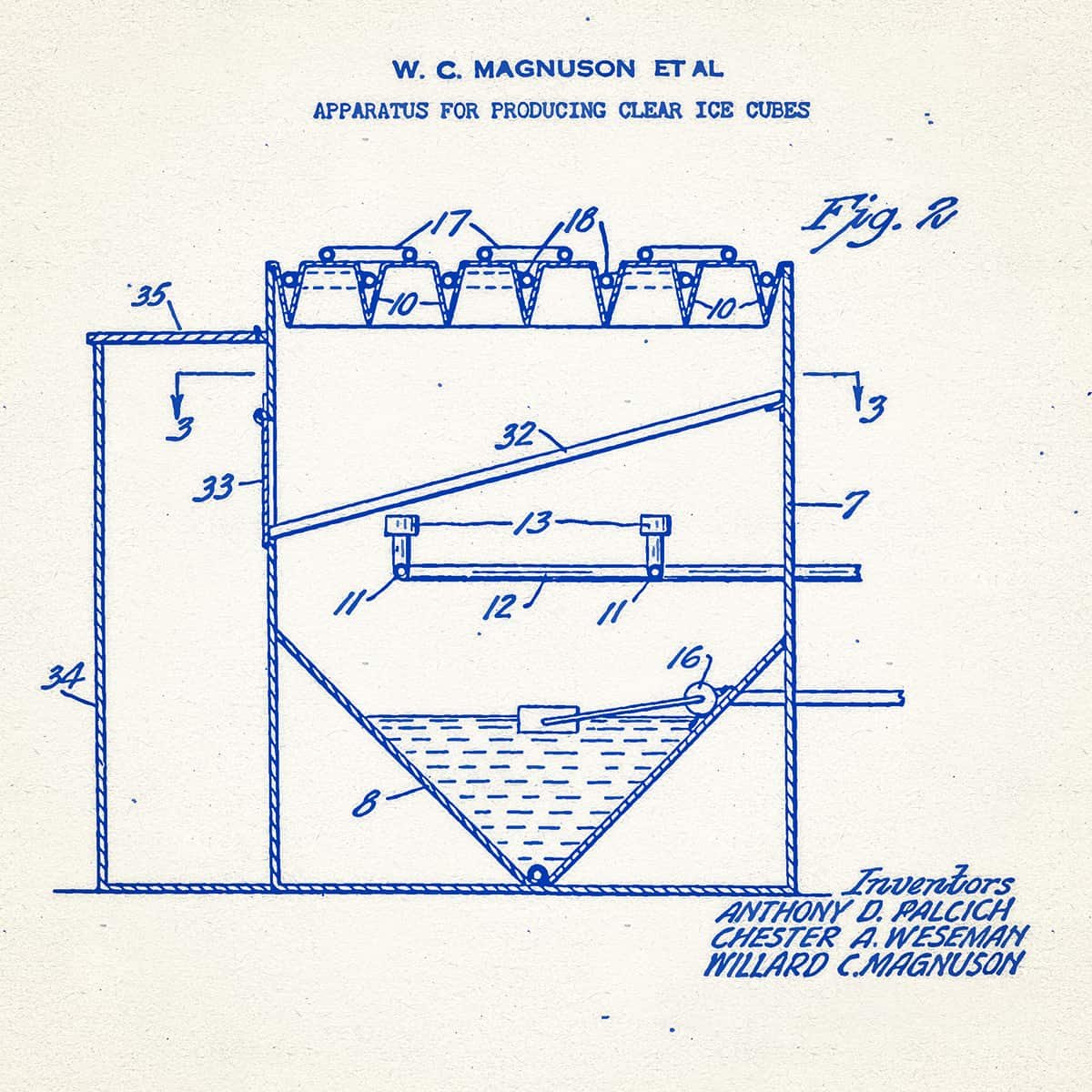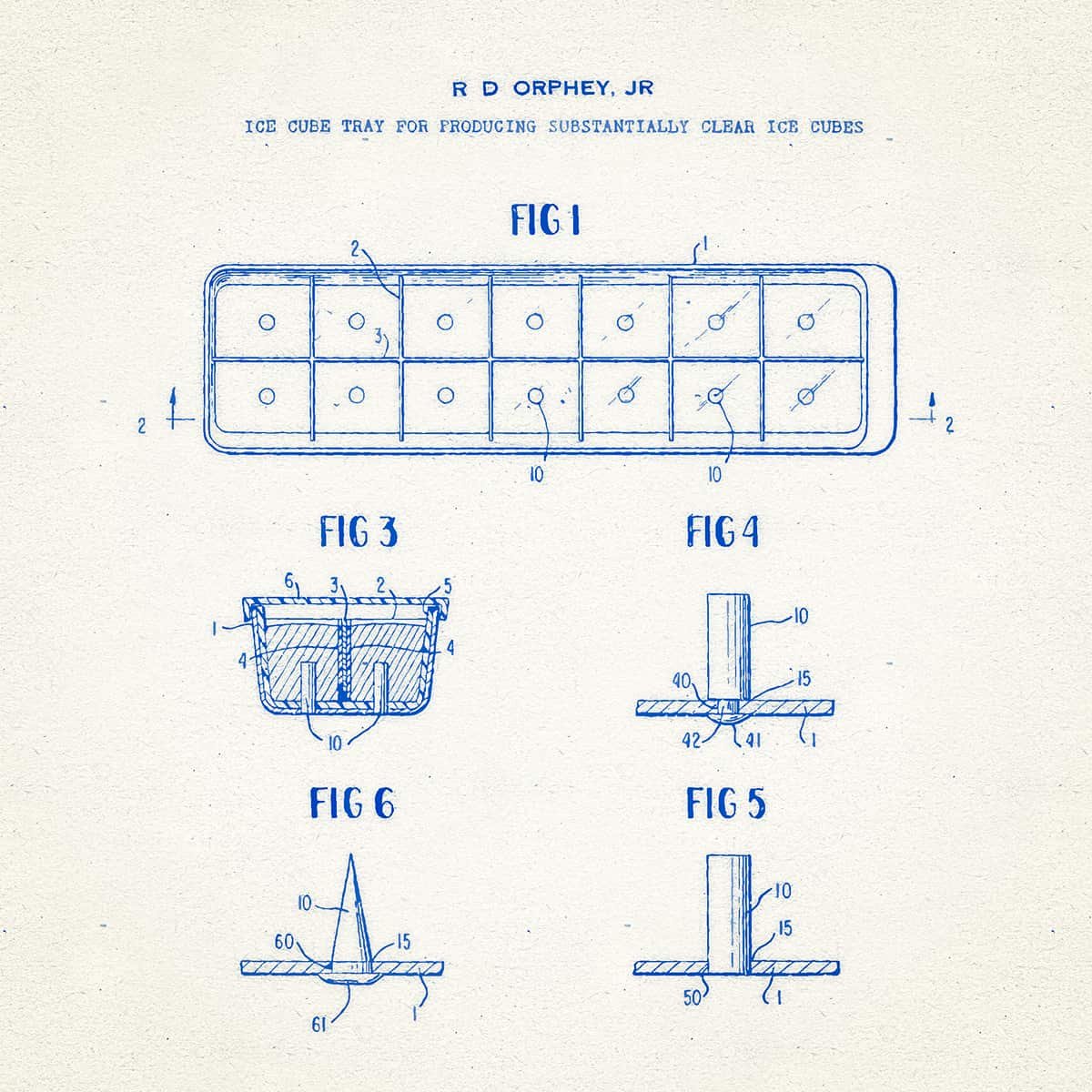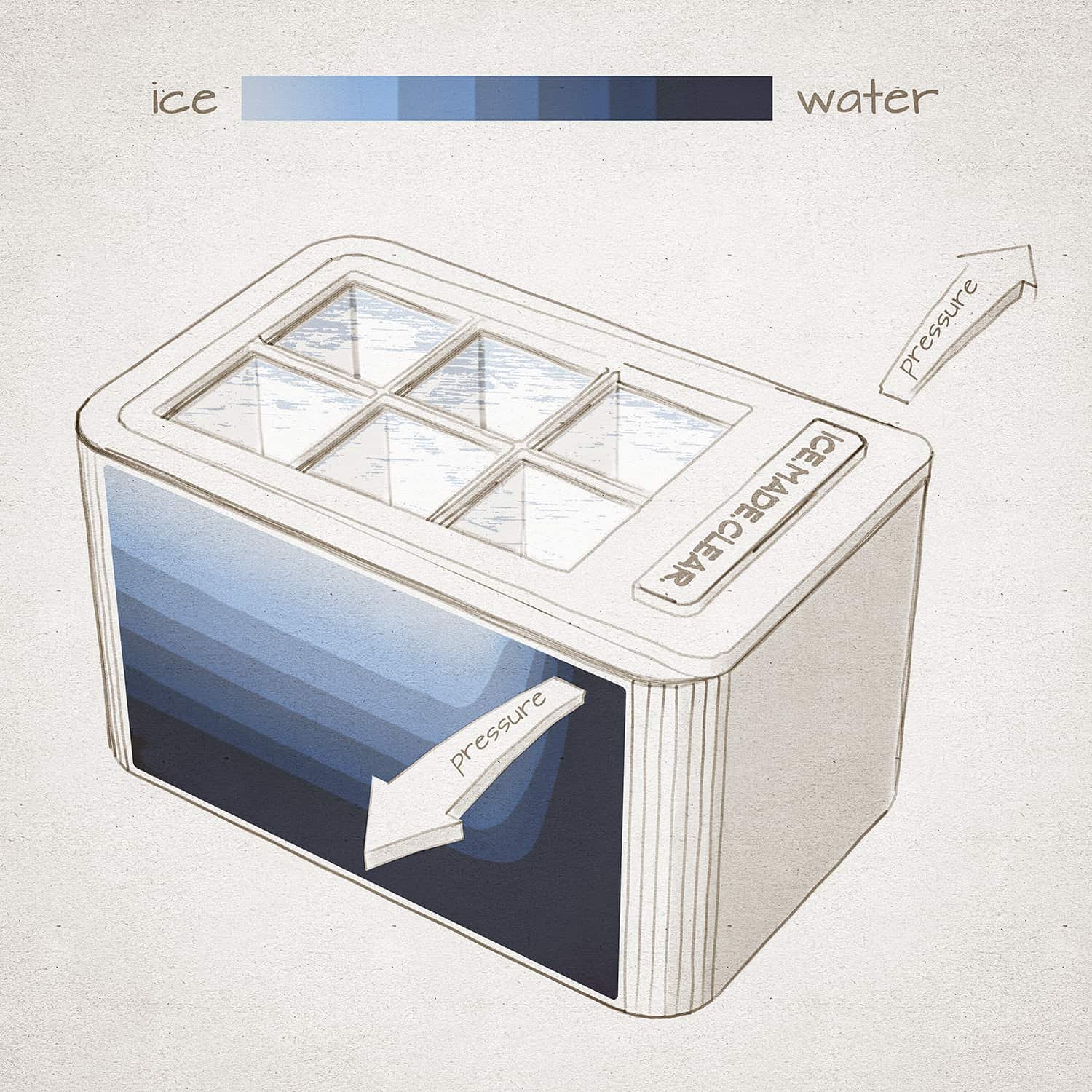After a long day, you relax on the couch with your favorite high-quality spirit or cocktail.
There’s just one problem - even with all the right ingredients, it never seems to taste quite as great as the one your favorite bartender whips up.
What’s the magic (some) bars have that home cocktails are missing?
It’s all about the ice.
The traditional way of making ice – both via freezer trays and automatic freezer ice-makers – results in unsightly cloudy cubes of ice that bring with them that weird, uninvited freezer flavor.
Your bartender’s secret? Clear ice cubes.
The neutral flavor of clear ice enhances every drink. A clear ice cube will disappear into your drink - not by melting, but by being so transparent that it’s nearly invisible.
The Quest For Clear Ice
Ready to geek out on ice production methods? Clear ice itself isn’t new – nature invented it! But, human inventions go back a long time–some quite unusual. Here’s a brief highlight reel of some of my favorites:
Upside Down Trays & Sprays
1950 brought a design that included an inverted structure for ice to freeze. Water would be sprayed into this structure layer by layer, never giving the air a chance to get trapped or to get cloudy. Once frozen, the cubes would be released into a receiving container underneath..
Ultrasonics
In 1964, vibration offered a solution to the trapped air bubbles that make ice cubes cloudy. By keeping the water shaking and rattling, dissolved gasses release before the cubes freeze.
Heat Conducting Posts
In this simple tray iteration from 1967, metal posts are centered in each cube mold. These posts conduct the heat away from the center of each cube, and they freeze from the inside out, The air is expelled from the yet-to-be-frozen outside of the cubes. There is only one downside – all the cubes have holes in the middle (shout-out to those hotel ice bucket cubes we probably all remember).
Circulation & Purge
In this 1972 design reminiscent of a Rube Goldberg machine, water is circulated by a pump and continually pushes out the impurities and bubbles that cause clouding. If you can understand the diagram, you win!
The approaches above were designed for commercial use - and many machines in hotels and large restaurants continue to operate on these principles. The thing is, none of these methods are suitable for home - they are big, loud, and energy-hungry.
But, there is one more alternative…and nature has sworn by it forever. It’s called Directional Freezing.
Directional Freezing
The reason an ‘ordinary’ ice cube gets cloudy is that it freezes from the outer surfaces inward. Air and impurities move inward and are trapped in the center. The idea of Directional Freezing is to allow a cube to freeze from only one direction - usually the top - which pushes the impurities to the bottom. In practice, that bottom cloudy part is separated from the clear ice on top by a permeable material so that the tray of clear ice can be easily peeled away once frozen.
Many people try to make clear ice at home. Either by trying techniques they have heard about or building their own DIY clear ice makers. Unfortunately, a good number of these techniques result in cloudy, freezer-burned ice cubes.
Let’s take a look at some of the pitfalls associated with DIY clear ice methods.
DIY Clear Ice Pitfalls
There are four main ways people attempt to make clear ice at home. Some of them do work if you put in the effort, others are very tough, and some really don’t get the job done at all.
Boiling the Water First
Boiling first makes clear-er ice, but it’s rarely totally clear. Some people advocate double boiling. That’s time-consuming and is still unreliable.
High Temperature Freezing
This method involves setting your freezer just under the freezing mark, which is 32 degrees Fahrenheit ABOVE the recommended temperature for a freezer. Not only is this approach hit-or-miss, but you also run the risk of ruining all of the food in your freezer.
Bottom-Up Freezing
This method is hugely complex and nearly impossible to get right. To make it work, you need to freeze the bottom of your cubes first, while keeping the tops of your exposed cubes unfrozen until the very end. Just try to picture how you might do that! This is less a repeatable method than it is a science experiment.
The Top-Down or “Directional Freezing” Method
I just mentioned this a few paragraphs back as the one effective method suited to home use. If you are going DIY-style, you’ll first need to fit an insulated cooler inside your freezer. You’ve got to make sure it is a well-insulated cooler too. Then you’ll want to suspend a regular ice cube tray in the cooler so that it is nearly submerged, but has it’s top exposed to the air–it won’t float, so you’ll need a creative solution to get this just right. Just remember to make holes in the bottom of each cube mold first–finding the right size and concentration of holes will take experimentation. Lastly, be careful with your trays. Silicone trays don’t have handles and are hard to remove from your icy-hard cooler once frozen–they are also thin and flimsy and usually end up ripping before long. Even once everything is set-up, there are still many variables at play and often the ice you make still isn’t totally clear. This is a frustrating pursuit; I’ve been there, done that before, and have seen how challenging it can be. Feeling this frustration was what actually set me on the track to design Ice.Made.Clear.™
Seeing the difficulties that came along with using these traditional, DIY ice-making methods, I was inspired to create a higher quality, simple to use, clear ice cube maker that could be used at home reliably – in anyone’s freezer.
How ICE.MADE.CLEAR.™ Works
ICE.MADE.CLEAR.™ (IMC) employs a natural phenomenon, the principle of Directional Freezing (which you’ve heard enough about by now), but simplifies the process for the user, and eliminates all the uncertainties.
Looking at a frozen lake in winter, you may notice that the top layers are clear. Like the lake, IMC is insulated on all sides but the top (the lake is insulated by the earth). This allows the water, as it freezes, to release dissolved gasses into the unfrozen reservoir below, and deliver stunning clarity to the ice above.
IMC takes this physical principle of nature and brings some important proprietary adaptations that are largely invisible to the user and allow anyone to easily make amazingly clear ice cubes.
One example of an adaptation that I can share is the large handle on the tray. Seemingly, it’s, well, a handle. But, in addition to providing grip, it has the secret role of insulating a reservoir below that remains unfrozen longer than the exposed water in the tray. This allows pressure to escape as the water freezes and expands, thereby minimizing a host of problems that can lead to disappointing ice. This is just one of many special design features that makes IMC not only easy, but reliable.
The best part about IMC? It’s simple to use and fits easily in your freezer - no need for additional equipment or skills!
Prototypes!
It took me four years and 100 prototypes to get it right, but now making that ideal cocktail is achievable at home!
Learn more about IMC here. https://icemadeclear.com/
What’s So Great About Clear Ice?
By now, you may be asking yourself, Why would Joe go to all the effort of designing this thing (ask my wife about the middle-of-the night 3D printing noises that went on for years...) What really makes clear ice so great?
Let’s dive into just some of the benefits of clear ice, shall we?
Drinks Taste Better
Clear ice has less dissolved, yucky freezer air. Thus, clear ice is clean-tasting, allowing the subtleties of high-quality spirits to emerge.Drinks Are Cool, Not Watery
Clear ice melts slower. The absence of air pockets on the outside creates a smooth exterior with less surface area to encourage melting. Because of this, drinks stay cool longer and don't get watered down as easily. Clear cubes also have more ice in them. Though that sounds impossible, it’s not. Think of it - where there could be air bubbles, there is instead more ice.Drinks Look Stunning
The glass-like clarity makes them nearly invisible in drinks, and provide a striking look that highlights the subtle coloring of any beverage.Universally, Friends are Impressed
Is this really a reason that clear ice is great? You’ll have to decide. :)
Clear Ice is Not Just For Cocktails
You can take your cocktails to the next level with clear ice, but there’s so much more that you can do with it! Here are a few ways people enjoy their clear ice cubes:
Make any drink - even a simple seltzer - more elegant by freezing a piece of fruit inside of a cube - a strawberry, lemon slice, a bit of orange rind, or even a sprig of mint!
Add them to cold-brew coffee. The clear cubes create a super-fun vertical-tunnel effect, allowing you to see down through your otherwise opaque coffee.
Cool down any beverage, and keep it cold (and tasty) longer.
What beverage would you upgrade with clear ice?
Ready to experiment in your own freezer? Learn more about ICE.MADE.CLEAR.™ and get started wowing your guests - and treating yourself.
Click here to get started: https://icemadeclear.com/










